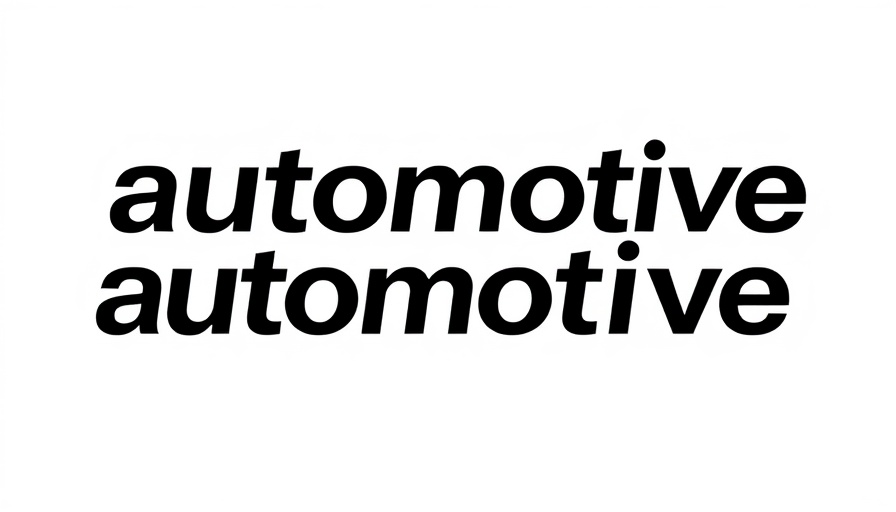
Germany's Vision for a Climate-Neutral Automotive Future
The German Association of the Automotive Industry (VDA) has unveiled a comprehensive 10-point plan aiming to transition towards climate-neutral mobility ahead of critical dialogues in Brussels regarding the future of the European automotive sector. This initiative underlines not only the commitment of the German automotive industry to align with the Paris climate agreements but also emphasizes the urgency for government support in navigating the evolving landscape of electromobility.
Investment in Transformation: A Call to Action
With plans for significant investments—over €320 billion in R&D and €220 billion in capital expenditures just from 2025 to 2029—German automotive companies are reinforcing their commitment to sustainability. These funds are earmarked for the transformation of manufacturing processes and the establishment of extensive electric vehicle (EV) production capacities. However, the overarching challenge remains: weak demand in Europe and insufficient regulatory frameworks hinder these ambitious objectives.
Global Competition and Strategic Flexibility
VDA President Hildegard Müller has articulated the pressing need for Brussels to adapt to global competition dynamics. With external pressures such as countervailing tariffs on electric cars from China and fluctuating U.S. customs policies, maintaining competitiveness while striving for climate goals is paramount. The call for flexibility reflects a principle crucial not just for compliance but for thriving in the market—a necessity echoed by industry stakeholders.
Addressing Regulatory Gaps in Mobility Transition
Müller points out that politicians have fallen behind in implementing necessary CO₂ fleet regulations and the essential charging infrastructure. The groundwork for achieving EU climate targets has been compromised due to inadequate supports, which must be addressed urgently. Without these improvements, the transition to climate-neutral transport could stall, undermining the substantial investments made by the automotive industry.
The Human Element: Workforce and Community Engagement
Transforming the automotive industry into a more sustainable one also involves the workforce. Companies are actively training employees to adapt to new technologies and production methods associated with electric vehicles. This commitment to training not only prepares the current workforce for future demands but also creates new job opportunities as the industry adapts to sustainability priorities.
Practical Insights for Dealership Owners
For dealership owners and GMs navigating this shifting landscape, staying informed about industry trends and understanding the implications of regulatory changes is critical. Emphasizing training programs that focus on electric vehicle sales and eco-friendly practices can greatly enhance a dealership's competitiveness in the evolving market. Training that encompasses both product knowledge and regulatory compliance will equip sales teams to effectively engage customers and drive sales in the age of sustainable mobility.
In conclusion, the automotive industry stands at the brink of a pivotal era where sustainability and competitiveness must coexist. The VDA’s push for a strategic and flexible approach, alongside significant investments and workforce development, lays the groundwork for a promising future in climate-neutral mobility.
 Add Row
Add Row  Add
Add 




Write A Comment